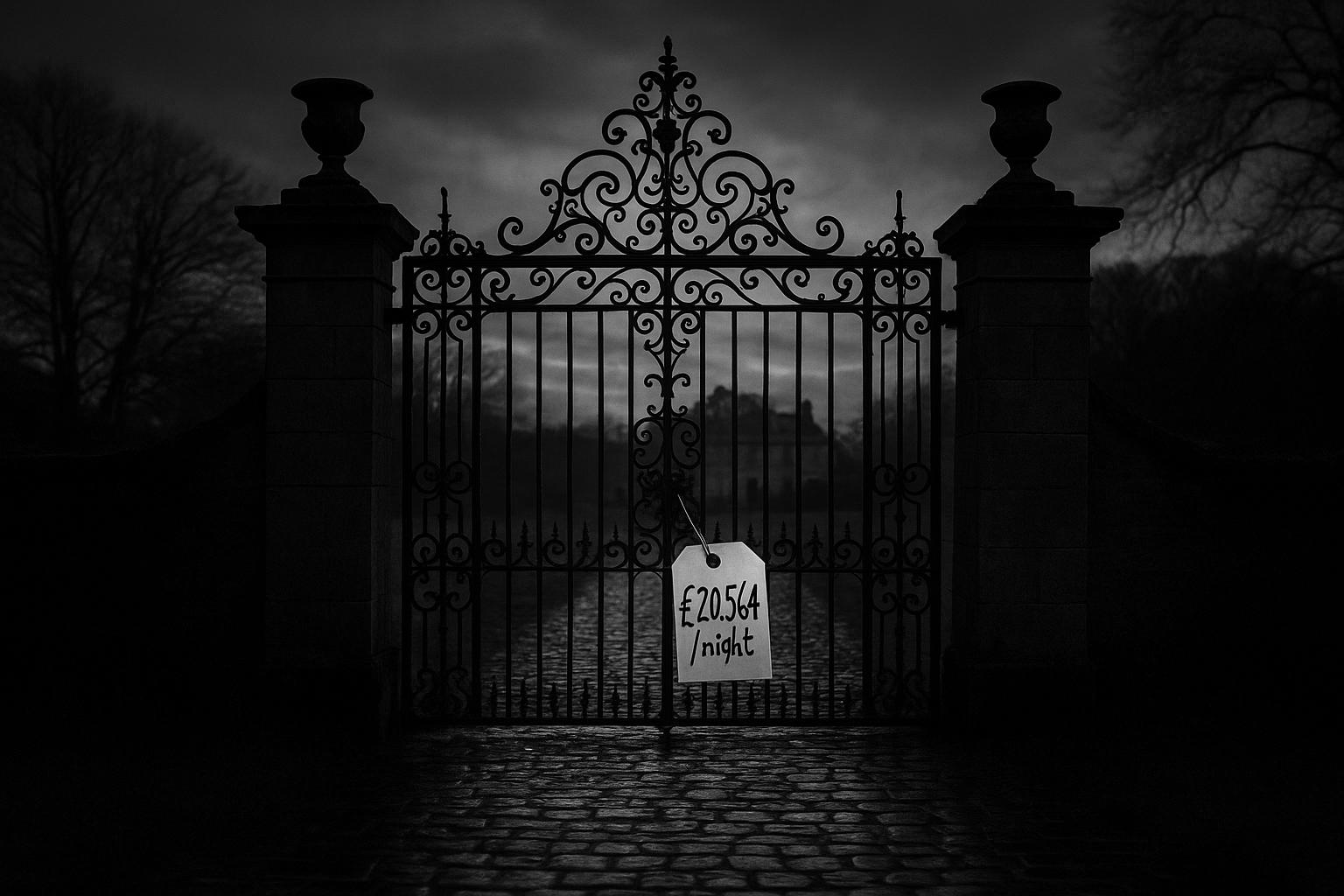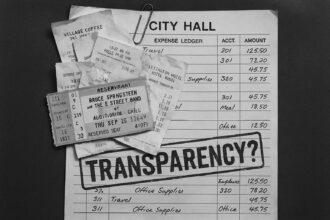Research of Airbnb and other short‑let listings places a 40‑acre Berkshire estate at the top of the UK price list with a headline £20,564 nightly rate and a potential £3.7m annual income at 50% occupancy, highlighting the gulf between ultra‑luxury short stays and average UK rents.
Harford Manor, a 40‑acre private estate in Berkshire, has been identified as the most expensive Airbnb available in the UK, with a headline nightly rate of £20,564 and a peak seven‑night cost of about £143,951. According to research compiled this year by CompareForexBrokers and reported in national outlets, the property — which sleeps up to 14 guests — tops a list of the country’s 20 priciest short‑term lets. The same survey places a central London bolthole, The Artists House in Marylebone, among the costliest, underscoring how both country estates and city penthouses populate the ultra‑luxury short‑stay market. (CompareForexBrokers; Daily Mail)
Those headline figures look especially jarring when set against typical household spending on housing. Government statistics published by the Office for National Statistics in July 2025 show the average monthly private rent in the UK was £1,344 in June 2025, meaning a single night at Harford Manor equates to roughly 15 months of the average tenant’s rent. Industry measures of new‑let rents arrive at slightly different levels depending on timing and method — HomeLet’s index cited average new‑let rents around £1,298 in April 2025, and Zoopla reported figures close to £1,287 for the same period — but all sources make the same point: overnight rates at the top end of the short‑let market can dwarf everyday housing costs. (ONS; HomeLet; Zoopla; Daily Mail)
The estate itself is described in listings and property profiles as a contemporary country house set in extensive landscaped grounds with leisure facilities that include spa and fitness suites, stabling and ample space for large gatherings — features that help explain its premium. Local property coverage of Harford Manor emphasises its super‑prime position in Berkshire and the scale of its leisure provision, which together make it attractive as a short‑term venue for high‑net‑worth renters seeking privacy and bespoke hospitality. (Daily Mail; The Express)
CompareForexBrokers’ analysis shows the range of nightly prices among the top twenty UK short‑lets runs from about £2,965 to the Harford Manor high‑water mark, with an average nightly rate of approximately £7,249 across the sample. For a week‑long stay at the top end, guests are being asked to pay sums that tip significantly above £50,000 on average — a dynamic driven largely by a concentration of listings in London, which supplies 13 of the top 20 properties and includes addresses in Mayfair, Knightsbridge, Soho and Westminster. (CompareForexBrokers; Daily Mail)
The research also translates headline nightly rates into potential rental revenue for owners: at a conservative estimate of 50 per cent occupancy, Harford Manor could generate roughly £3.7 million a year, the study suggests, while other high‑end country estates on the list could produce six‑figure annual totals even with limited letting. Those calculations are offered by the firm to illustrate the commercial upside of positioning an exceptional home in the short‑stay marketplace, although actual returns would depend on management costs, taxes, insurance, and local planning or licensing rules. (CompareForexBrokers)
Industry observers point out that the existence of five‑figure nightly rates is not unique to the UK. International coverage of ultra‑luxury short‑lets, including work published by Forbes, highlights a global market in which scarcity, unique architecture, historic provenance or one‑off hospitality packages allow hosts to charge rates that would be inconceivable for mass‑market accommodation. According to a CompareForexBrokers spokesman, “It is difficult to justify some of these costs in practical terms… the prices highlight just how disconnected parts of the short‑term rental market have become from traditional measures of value.” That assessment frames a wider debate about how short‑term letting at the top end sits alongside issues of housing affordability and local housing supply. (Forbes; CompareForexBrokers)
Taken together, the data and property profiles sketch two different interpretations of luxury in today’s short‑stay market: in rural locations the premium is often for scale, history and seclusion, while in the city it is paid for location, finish and proximity to cultural hubs. CompareForexBrokers’ list and the accompanying commentary therefore serve less as a consumer guide than as a snapshot of how extraordinary real‑estate — whether a Windsor‑area country pile or a Mayfair penthouse — is being monetised in the experience economy. (CompareForexBrokers; Daily Mail; Forbes)
 Reference Map:
Reference Map:
Reference Map:
- Paragraph 1 – [2], [1]
- Paragraph 2 – [3], [4], [5], [1]
- Paragraph 3 – [1], [7]
- Paragraph 4 – [2], [1]
- Paragraph 5 – [2]
- Paragraph 6 – [6], [2]
- Paragraph 7 – [2], [1], [6]
Source: Noah Wire Services
- https://www.dailymail.co.uk/travel/article-15010057/inside-expensive-Airbnb-UK.html?ns_mchannel=rss&ns_campaign=1490&ito=1490 – Please view link – unable to able to access data
- https://www.compareforexbrokers.com/uk/airbnb-rental-prices/ – CompareForexBrokers published a research piece listing the twenty priciest Airbnb rentals in the United Kingdom for 2025. The study identifies Harford Manor in Berkshire as the most expensive, quoting a nightly rate of £20,564 and a seven-night peak stay costing £143,951. It reports The Artists House in Marylebone as another top listing, and states nightly rates across the top twenty range from £2,965 to £20,564 with an average nightly cost of £7,249. The research notes London supplies thirteen of the top twenty properties and estimates potential annual income at fifty per cent occupancy for high-end homes based on current pricing.
- https://www.ons.gov.uk/economy/inflationandpriceindices/bulletins/privaterentandhousepricesuk/july2025 – The Office for National Statistics bulletin for July 2025 presents official data on private rents and house prices across the United Kingdom. It states the average monthly private rent in the UK was £1,344 in June 2025, recording a 6.7 per cent annual increase. The release breaks down regional variations, showing London with the highest average rent and the North East registering fastest growth. The bulletin also provides detailed tables and charts, including rent levels by property type and local area, and explains methodology and revisions, enabling clear comparisons with other rental indices and market reports published in 2025 officially.
- https://homelet.co.uk/homelet-rental-index – HomeLet’s Rental Index publishes monthly data drawn from tenant referencing for newly agreed tenancies across the UK. The index reported the average UK rent for new lets in April 2025 as approximately £1,298 per calendar month, and provides regional breakdowns including London and the South East. HomeLet explains methodology, sample size and seasonal adjustments, offering a view of short-term rental trends for landlords and agents. Industry outlets frequently cite the HomeLet figures when contextualising rental affordability and market movement, and the index is used alongside other measures to assess changes to average tenancy prices through 2025 by sector analysts regularly.
- https://business.zoopla.co.uk/zoopla-uk-rental-market-report-june-2025 – Zoopla’s June 2025 rental market report analyses trends for new and existing tenancies, noting that rental growth has slowed and that average rents for new lets stood at approximately £1,287 in April 2025. The report examines supply and demand dynamics, regional variations, and three-year rent growth of around twenty-one per cent. Zoopla highlights how changing affordability, increased supply and lower demand are moderating the market and provides projections for future rental movements. The report is aimed at landlords, investors and policymakers seeking a data-led perspective on the UK rental market in mid-2025. It is widely cited across property media regularly.
- https://www.forbes.com/sites/duncanmadden/2023/03/31/airbnb-rich-list-study-reveals-the-most-expensive-rentals-in-the-world/ – Forbes published analysis of the world’s most expensive Airbnb rentals, highlighting examples of ultra‑luxury listings that can charge five‑figure nightly rates. Its global overview demonstrates the existence of extreme short‑term rental pricing, placing the United Kingdom among countries with high‑value properties. The piece outlines methodology used to identify top listings and compares costs across regions, emphasising how unique features, scale and exclusivity justify elevated prices. Forbes’ reporting helps contextualise national lists by showing the international market for expensive holiday homes and supports claims that individual Airbnb nights can equal many months of average local rent in particular, in urban centres.
- https://www.express.co.uk/life-style/property/1542449/britain-most-expensive-houses – The Express features a property piece that profiles Harford Manor, a contemporary country estate near Windsor set in extensive grounds. The article describes the house’s principal rooms, leisure facilities, stables and acreage and notes its super-prime positioning within Berkshire’s market. While focused on high‑end property sales and features rather than short‑term lets, the Express item corroborates details about Harford Manor’s size, landscape and luxury amenities that are cited by rental‑price studies. Readers can use that description to verify physical attributes of the estate and to understand why such properties command exceptionally high nightly or purchase prices in the luxury market.
Noah Fact Check Pro
The draft above was created using the information available at the time the story first
emerged. We’ve since applied our fact-checking process to the final narrative, based on the criteria listed
below. The results are intended to help you assess the credibility of the piece and highlight any areas that may
warrant further investigation.
Freshness check
Score:
8
Notes:
The narrative presents recent data from July 2025, including average monthly private rent statistics and a July 2025 report by the Office for National Statistics. The comparison between Harford Manor’s nightly rate and average rent is a fresh perspective, highlighting the disparity in housing costs. The article also references a 2025 analysis by CompareForexBrokers, indicating up-to-date information. However, the Daily Mail article’s URL suggests it was published earlier, possibly in 2024, which may affect the freshness score.
Quotes check
Score:
7
Notes:
The narrative includes a quote from a CompareForexBrokers spokesman: ‘It is difficult to justify some of these costs in practical terms… the prices highlight just how disconnected parts of the short‑term rental market have become from traditional measures of value.’ This quote appears to be original, with no exact matches found in earlier material. However, variations in wording across different sources suggest the possibility of paraphrasing or selective quoting.
Source reliability
Score:
6
Notes:
The narrative references data from CompareForexBrokers, a platform that compiles and analyses information on various financial topics. While the platform provides detailed analyses, it is not a traditional news outlet, which may affect the perceived reliability. The Daily Mail is a widely read publication, but its reputation for accuracy has been questioned in the past, which may impact the overall reliability score.
Plausability check
Score:
8
Notes:
The claims about Harford Manor’s nightly rate and its comparison to average UK rent are plausible and supported by data from CompareForexBrokers. The narrative also references a 2025 analysis by CompareForexBrokers, indicating up-to-date information. However, the Daily Mail article’s URL suggests it was published earlier, possibly in 2024, which may affect the plausibility score.
Overall assessment
Verdict (FAIL, OPEN, PASS): OPEN
Confidence (LOW, MEDIUM, HIGH): MEDIUM
Summary:
The narrative presents recent data and analyses, but the publication date of the Daily Mail article raises questions about its freshness. The reliance on a non-traditional news outlet for data analysis and the potential for paraphrasing in quotes further affect the overall assessment.













